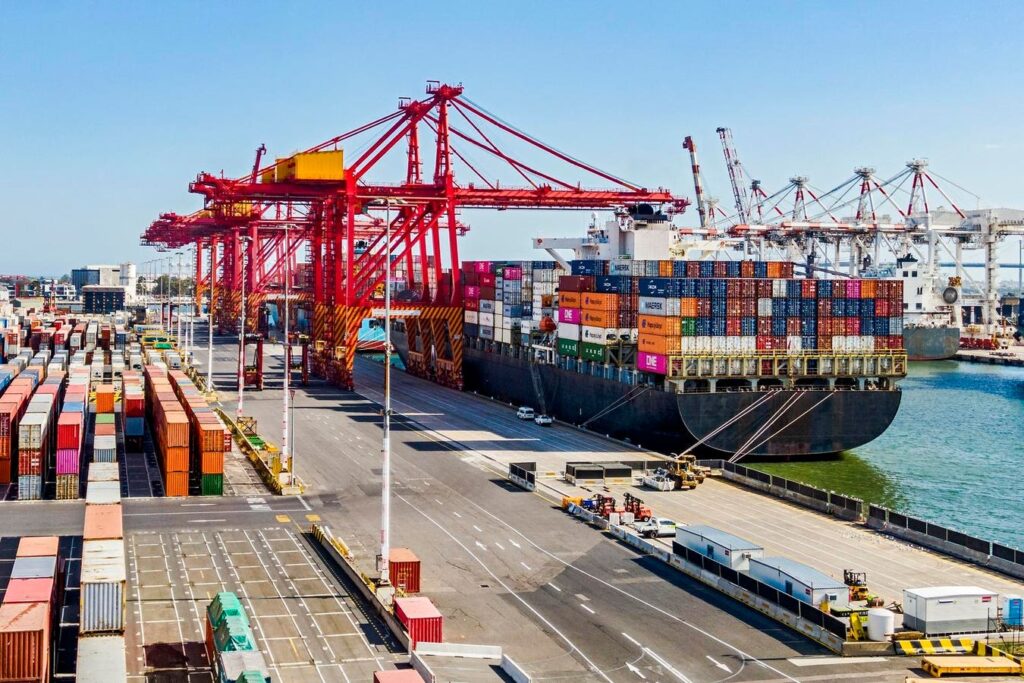Morten Johansen is the COO of DP World Americas.
In an era defined by unprecedented disruptions, from global pandemics to geopolitical tensions, supply chains have become a focal point of strategic recalibration. As companies seek resilience and agility, the inter-Americas trade corridor is emerging as a compelling alternative to traditional global supply routes. Understanding this shift is critical for businesses wishing to adapt and capitalize on this evolving landscape.
The Case For Regional Resilience
Historically, Latin America has played a secondary role in global supply chains. Despite its geographic proximity to the United States, efforts to establish robust manufacturing and logistics hubs have often lagged behind Asia’s dominance. In 2022, Latin America and the Caribbean’s manufacturing output was approximately $1.15 trillion. In contrast, at $5 trillion, China alone accounted for 31% of global manufacturing output in 2022, underscoring Asia’s dominance in this sector.
However, the vulnerabilities exposed by extended global networks are now driving companies to rethink their strategies. The near-collapse of supply chains during Covid-19 and subsequent geopolitical upheavals have underscored the risks of over-reliance on distant, single-source suppliers.
The “China-plus-one” and nearshoring strategies have become necessities rather than options. Inter-Americas trade offers proximity, reduced transit times and operational flexibility—advantages that are reshaping corporate priorities.
Key Drivers Of The Shift
1. Geopolitical and Environmental Risks: Events like the Russia-Ukraine conflict and disruptions in critical shipping lanes, such as the Red Sea and Panama Canal, have amplified the importance of diversifying supply chain routes. In 2023, Panama Canal operations faced significant delays due to a historic drought, which led to a 20% reduction in transits. This highlighted vulnerabilities in critical maritime routes and prompted companies to consider alternative routes and regional production hubs.
2. Nearshoring Momentum: Mexico has been a primary beneficiary of nearshoring, with its northern industrial hubs capturing significant growth. Now, attention is expanding to southern regions and other Latin American nations like the Dominican Republic, Costa Rica and Brazil. These areas are attracting investments in ports, railroads and industrial zones, creating new opportunities for supply chain diversification.
3. Market Potential: South America’s growing economies, such as Guyana and Panama, are fostering optimism. The Atlantic Council estimates that “nearshoring could add an annual US$78 billion in additional exports of goods and services in Latin America and the Caribbean in the near and medium term.”
4. Technological Integration: As companies prioritize supply chain resilience, investments in advanced technologies like digital tracking, automation, and artificial intelligence are becoming pivotal. These innovations enhance cargo visibility, streamline operations, and mitigate risks.
Navigating Challenges
Despite its promise, the inter-Americas trade corridor presents unique challenges that require careful navigation.
There are several logistical hurdles to operating in Latin America. For example, fluctuating shipping costs and transit delays remain significant concerns. Infrastructure gaps in some regions, coupled with limited supplier networks, can create bottlenecks. The United Nations Conference on Trade and Development (UNCTAD) reported that in 2023, freight rates on Europe-to-South America routes dropped by 36%, while Africa-to-South America routes saw a 20% increase, reflecting the region’s sensitivity to global trade dynamics.
There is also an enormous amount of regulatory complexity. Latin America is not a unified trading bloc like the EU. Businesses must contend with diverse regulatory environments, customs protocols and market dynamics. Establishing a local presence and understanding these nuances are essential for success.
The World Bank identifies regulatory constraints as a major barrier to trade in services within Latin America. The organization notes that diverse regulations across countries can hinder the opening up of trade, which is crucial for attracting foreign direct investment and increasing competition in service sectors.
While sustainability is a growing priority, it remains a secondary factor for many companies compared to cost efficiency and risk reduction. However, long-term strategies must account for potential carbon taxes and the increasing demand for environmentally responsible practices.
The Road Ahead: Opportunities And Optimism
The inter-Americas trade corridor offers a compelling path for companies to future-proof their supply chains. By tapping into Latin America’s economic potential and investing in regional solutions, businesses can reduce reliance on distant suppliers, enhance agility and respond effectively to disruptions. Plus, diversification provides three critical benefits: risk reduction, greater flexibility and cost savings. Achieving these outcomes, however, requires a strategic approach that balances short-term challenges with long-term goals.
Strategic Imperatives For Success
As businesses navigate this transformation, they should focus on the following strategies:
1. Diversify Supplier Networks: Building redundancies into supply chains is essential to mitigate risks. This requires identifying reliable suppliers in emerging Latin American markets while maintaining flexibility to adapt to changing conditions.
2. Invest in Infrastructure and Technology: Companies must leverage advancements in supply chain technology to overcome visibility and communication challenges. Investments in regional infrastructure, from ports to warehouses, will further strengthen their operational capabilities.
3. Develop Local Expertise: Understanding the nuances of each market is critical. Establishing partnerships with local stakeholders and leveraging in-country expertise can ease entry barriers and foster long-term growth.
4. Balance Sustainability with Operational Goals: While immediate priorities often center on cost and resilience, integrating sustainable practices can yield competitive advantages over time. Companies that proactively address environmental concerns will be better positioned to navigate evolving regulatory landscapes.
The path to a resilient, efficient and sustainable supply chain lies in embracing innovation, fostering collaboration and leveraging the untapped potential of the Americas.
In a world where uncertainty is the only constant, adaptability is not just a virtue—it is a competitive necessity. The inter-Americas trade corridor is poised to become a cornerstone of global supply chains and those who seize the opportunity today will shape the future of trade tomorrow.
Forbes Business Council is the foremost growth and networking organization for business owners and leaders. Do I qualify?
Read the full article here











